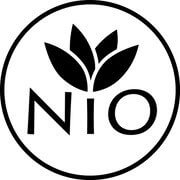Before we get started talking about tea colors, it makes sense to answer one basic question, what is tea?
Tea is more than just something you brew in your cup with hot water, it actually has a very specific definition. All true teas come from the same plant, Camelia sinensis. Camelia sinensis is an evergreen shrub native to Southern China and India. It has been cultivated for the past 4,000 years as both a medicinal plant and as a social and cultural beverage.
6 main type of true teas referred as Tea Colors
There are 6 main type of true teas. These are often referred to as tea colors, White tea, Yellow Tea, Green Tea, Oolong Tea, Red Tea and Dark Tea (Heicha). All 6 of these tea colors come from the Camelia sinensis plant.
In this article, we are going to be talking about the tea colors you might find in your cup and how the categories of tea, while helpful, can sometimes be a bit misleading.
Later in this article, we explain in detail these 6 main types of teas. You can also find a brief overview of the different types in the video bellow.
Hot drinks made from peppermint, rooibos, hibiscus, chamomile and yerba mate, are not actually teas but rather “tisanes” after the Greek word “ptisane” which literally translates to “crushed barley”. Even though these may seem like colorful teas, we won't take herbal infusions into consideration in this article.
What are the different tea colors?
As if things were not confusing enough already, there are also different colors a tea can take on that don’t necessarily contribute to the name.
Yellow tea does tend to be yellow, and red tea does tend to be red, but tea colors are often different than the name would suggest. For example, only a handful of Japanese green teas are truly “green” whereas the rest of the green teas around the world are more yellow in color.
Some raw puerh teas are considered to be “dark tea” or “black tea” but they actually have a light orange color. Let’s dive into the different tea colors you might find in your cup and talk about which category each one can fall into.

White or “Pale” Tea
You may come across a tea that is extremely light in color and almost looks clear. These tea colors often correspond to white teas made from the buds of the tea plant like “silver needle”.
These sun-dried buds of the tea plant produce an incredibly light color. The tea colors can range anywhere from clear to a light beige and you can refer to this as white or pale.

Yellow Tea
The tea colors that are perhaps the most common are these yellows.
Green tea is the most common type of tea in China and Japan and most of these take on a yellowish color.
The name green tea refers to the color of the leaves in this case and not the color of the liquid.

Green Tea
People think that the tea colors of light green and dark green are the standard for green teas, but these are actually quite rare. Fukamushi or deep steamed teas are really the only teas that can reliably achieve this green color.
Of course matcha green tea powder also shows these green tea colors but this is because the leaves are ground into a powder and mixed directly into water. Because you are consuming the entire leaf, you not only get the strong tea colors, but also more of the health benefits as well.
Gyokuro tea can sometimes achieve these green tea colors, particularly when prepared as a cold brew. This tea is shaded for a long time, which maximizes the sweetness and also the chlorophyll of the tea.
This higher chlorophyll content is why the leaves are such a dark shade of green. The tea usually brews a yellowish green color, but it can occasionally drift into the green direction.

Orange Tea
This is another one of the most common tea colors. While more orange tea colors are usually the sign of a low quality green tea, they are what you want to see in certain types of oolong, white tea and dark tea.
Oolong tea is most likely going to brew some variation of orange tea colors, and white teas made from mostly the leaves rather than the buds will produce a yellowish orange as well. While ripe puerh is usually black in color, raw puerh tends to be a light shade of orange.

Red Tea
Red tea is one of the few examples where the tea colors and the tea types are aligned. Red tea, or as we know it in the west as “black tea” tends to brew a reddish infusion.
While a lot of red teas start to drift in the direction of brown, you will notice that there is a tiny hint of red to them, particularly when you hold them up to the light. This can be one of the most beautiful tea colors to look at!

Black Tea
Finally we have the darkest of the tea colors and that is black tea. This is where the tea colors and tea varieties get confusing again, but it is important to remember that in China and Japan, black tea is called “red tea”. This makes the tea colors more in line with the tea varieties.
Heicha or dark tea is used to refer to teas that have been post fermented. The most famous example of this is pu’erh which is a dark tea from the area of Yunnan. The ripe puerh teas brew an extremely dark color, almost like coffee. This is where the tea variety and the tea colors begin to sink up again. This more extreme version of “black tea” truly is black in color.
The 6 main Types Of Tea
White Tea
White tea is the most minimally processed of all the types. The leaves and buds are picked and then allowed to dry off in the sun, which stops most of the oxidation. Although white tea can be made from both old and young leaves, it is most recognizable for these white buds which is where the tea gets its name.
Yellow Tea
This is the rarest of the 6 types of tea. It is similar to a green tea, but with the extra step called “men huan” or “sealing yellow”. After the leaves have been pan-fired, they are wrapped in a cloth as the natural aromas of the leaves are sealed in. Apparently, this reduces the grassy taste that people normally associate with green teas, making it a unique category altogether!
Green Tea
Green teas are unoxidized. After they are picked they are steamed for just under a minute to stop the oxidation process. The tea maintains its more grassy or vegetal flavors and the leaves maintain their green color. Did you know that green tea can turn into a brown cup of tea? To learn why, read the article 👉 Why is my green tea brown?
Oolong Tea
This tea is partially oxidized. Oolong is a broad category of tea, but many oolong teas follow a specific pattern. The oxidation is first sped up, and then it is later halted.
To speed up the oxidation process, the tea leaves can be bruised, to bring the enzymes up to the surface of the leaf and expose them to oxygen. This kicks off the oxidation process and then it is later slowed down through the use of heat. If you're looking for a great Japanese Oolong Tea, we recommend you the Oolong Miyazaki Sabou.
Red Tea
In Europe and North America, this tea is called “Black Tea” but in much of Asia it is referred to as red tea or “Hong Cha” so as to not be confused with Heicha or dark tea. This tea is not heated after harvesting, but is rather allowed to oxidize naturally. The leaves turn a dark brown color, and the liquor is a beautiful amber or ruby color.
Black Tea
This tea is also known as “post fermented” tea. This includes the better known Pu-erh tea although the term “Pu-erh” technically refers only to dark teas produced in the area of Pu-erh. The broader category is “Heicha” or dark tea. These teas are often pressed into cakes and stored for long periods of time to develop their flavors.
Factors that influence the tea colors
Tea colors can be influenced by the processing of the tea. These processing methods also affect what category the tea falls into, and that’s why there are often parallels between tea colors and tea types. In the next section, we will get into the different stages in the production of tea, and how each one of them change the tea colors of the brewed tea.
The Oxidation
The oxidation is the single most important factor in determining not only the tea variety, but also tea colors as well. As we mentioned before, green teas, yellow teas and white teas are unoxidized and oolong teas, red teas and black teas are either partially oxidized or fully oxidized. The difference between the last 3 mostly comes down to the order in which the heat is applied to the leaves.
During the oxidation process, the catechins of the tea plant are converted into theaflavins and thearubigans. This turns the leaf from a green color to a reddish brown color. The brewed liquid will also transition from yellows and greens to more orange, reddish and brown colors.
The Firing/steaming
The firing, roasting and steaming of a tea can also greatly influence the tea colors. Roasted teas like hojicha will transition from greener colors of the leaves and liquid to more brown or orange colors. The taste will also drift into the warmer direction, with flavors of coffee, caramel and chocolate.
In the case of fukamushi or deep steamed teas, the longer steaming process will turn the tea colors from yellow to a dark green. This is because the leaves are broken down during the extra steaming, causing more of the leaf material to be released into the brewing. This creates a cloudy green color and a rich, full-bodied flavor.
Aging
During the aging process, the tea can also become darker overtime. This is evident in the difference between young puerh and ripe puer. The tea colors of the puerh are more in this clear orange direction. When the tea is “wet-piled” and aged to produce a ripe puerh, these tea colors become black and opaque. This is a complete transformation of the tea colors that only comes about due to the aging and fermentation of the tea.

Brewing
Not all of the differences in tea colors are determined by the producer, some differences come down to how the tea is prepared. If you brew a green tea with a high temperature for example, you will end up with more of these orange tea colors.
What you want for a Japanese green tea is these yellow or green tea colors, which will usually correspond with a smoother and sweeter flavor. For this you will want to use a lower brewing temperature, between 140-160 degrees fahrenheit.
Other teas like red tea, oolong tea and black tea, will simply take on darker tea colors when they are overbrewed. Instead of a light yellowish orange, you will get a dark orange. This is a good thing to keep an eye out for as you become more in tune with how teas are prepared and which brewing parameters get the best results.
Depending on the temperature and brewing time, you could be extracting entirely different ratios of components from the leaves, so the flavor will be completely different.
The steep
The final difference in tea colors comes down to the steeping. Make sure you are not throwing your tea leaves out after one brewing! These can be used many times, with each producing a different flavor.
As a general rule, the tea colors will begin dark and then gradually get lighter and lighter with each steeping, although this is not always the case. In the case of fukamushi sencha, the tea colors actually become a darker green in the second brewing. Make sure you don’t miss out and enjoy 3-4 steepings for each Japanese green tea!




